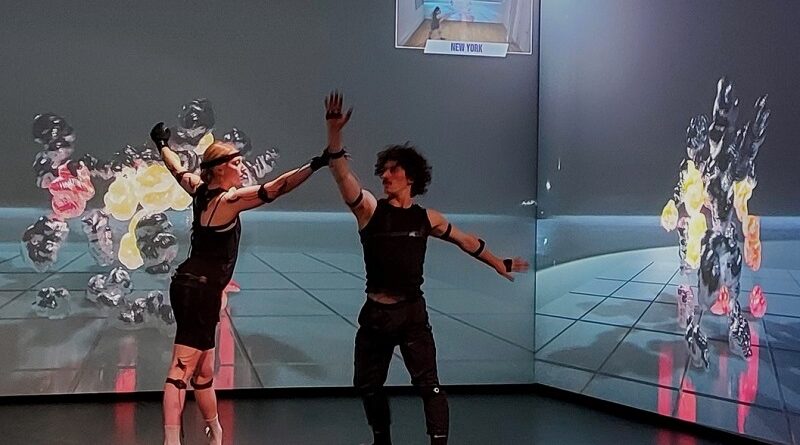The Digital Revolution in Dance Studios
Technology integration in dance studios is becoming a reality rather than a vision of the future. With many digital tools and dance studio software, dance studios can streamline operations, enhance communication, and elevate the overall experience for instructors and students. Technology not only simplifies the administrative workload but also offers improved methods for teaching and engagement, effectively transforming how studios operate and interact with their community.
In today’s digital age, leveraging dance studio software is imperative for maintaining an efficient and organized dance environment. Such software helps simplify administrative tasks and maximize productivity, making it an essential tool for modern dance studios. By automating scheduling, payment processing, and class management, studios can focus more on crafting unparalleled dance experiences.
Streamlining Operations with Technology
Specialized software helps dance studios run more efficiently, from class management to scheduling. These digital solutions allow easy student attendance tracking, payment processing, and collecting feedback. Technology is crucial in automating mundane tasks, enabling teachers to devote more time to instruction and less to paperwork. This shift not only improves the overall management of the studio but also creates a more efficient and enjoyable environment for both instructors and students.
The ease of scheduling through digital platforms ensures no class overlaps, and instructors have clear visibility of their timetable. Additionally, tracking payments digitally reduces errors and increases financial transparency. All these aspects contribute to a seamless operation, allowing dance studios to thrive and deliver quality education.
Enhancing Student Engagement
Engagement is critical to a successful dance studio. Modern technology offers multimedia resources that make learning more interactive and fun. From instructional videos to live virtual classes, students can access many resources at their fingertips. Tech can help educators tailor experiences to meet individual student needs, boosting engagement and satisfaction. This personalized approach ensures students remain enthusiastic and motivated, improving their learning experience.
Innovative tools such as augmented reality (AR) can provide immersive learning experiences, allowing students to visualize complex dance moves in a three-dimensional space. Interactive platforms enable instant instructor feedback, fostering a dynamic and responsive learning environment. By leveraging these technologies, dance studios can create a vibrant and participative culture that nurtures talent and creativity.
Virtual Classrooms: The New Normal
The COVID-19 pandemic accelerated the adoption of virtual and online learning platforms, making them an integral part of dance education. These platforms provide flexibility, enabling students to learn from anywhere worldwide. Innovations in virtual classrooms have made it easier for dance studios to offer classes globally. Students can now access their favorite classes without geographical constraints, expanding the reach of dance education.
Moreover, virtual classrooms offer the ability to record sessions, allowing students to revisit lessons conveniently. These platforms’ interactive nature encourages participation, enabling distant learners to feel a sense of community. Studios can also host virtual events and performances, keeping the spirit of dance alive even during physical distancing.
Accessibility and Inclusivity
Additionally, technology is a significant factor in making dance more accessible and inclusive. Online platforms allow people with mobility issues to take lessons from the convenience of their own homes. Additionally, virtual classes offer an ideal solution for those in remote locations, ensuring that everyone has the opportunity to learn and enjoy dance. This inclusivity broadens the horizons of dance education, welcoming a diverse range of students from various backgrounds and abilities.
The technology ensures that dance remains an inclusive art form by offering adaptations and modifications for different needs. Closed captioning, audio descriptions, and customizable interfaces cater to students with other sensory and physical needs, making dance universal.
Data-Driven Decisions
Modern dance studio software often includes features for analytics and reporting. These resources can offer insight into students’ development, class popularity, and studio performance. Utilizing such data allows studio owners to make well-informed choices that can improve the organization’s and pupils’ success. Data analysis can reveal trends and patterns, enabling studios to optimize their schedules and resources effectively.
For example, identifying popular classes and peak attendance times can help plan future sessions and marketing strategies. Tracking individual student performance also allows for personalized feedback and targeted interventions, enhancing the overall quality of instruction.
Staying Competitive with the Latest Tech
Staying current with the most recent technology developments can provide a competitive edge. Studios that leverage cutting-edge tools enhance operational efficiency and offer students a richer and more engaging experience. Utilizing the latest software can attract tech-savvy clients who value innovation. Embracing technology is also a studio’s commitment to staying contemporary and relevant in a fast-paced world.
Virtual reality (VR) and artificial intelligence (AI) are two examples of innovations that offer unparalleled learning experiences, setting a studio apart from its competitors. By adopting these technologies early, studios can position themselves as leaders in the industry, attracting a forward-thinking clientele.
Future Trends in Dance Studio Technology
The future of dance studio technology looks promising, with advancements in virtual reality, artificial intelligence, and machine learning poised to transform the industry further. Staying updated with these trends can help studios remain competitive and relevant in a constantly changing environment. For instance, VR can provide immersive practice environments, and AI can offer personalized coaching based on real-time performance analysis.
As technology develops further, the possibility for creativity in dance education is limitless. Studios that embrace these changes will enhance their educational offerings and pave the way for future generations of dancers to thrive in a technologically enriched environment.



